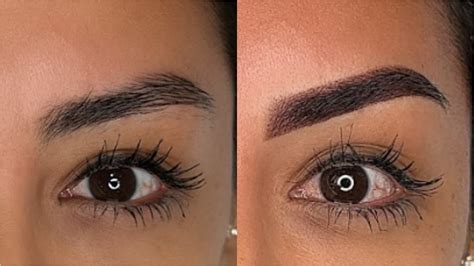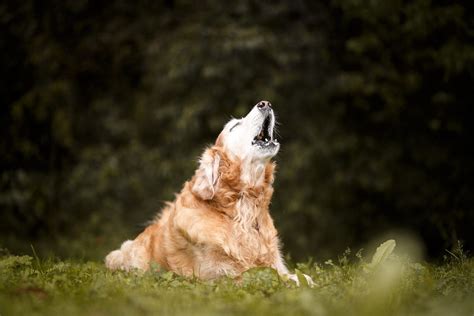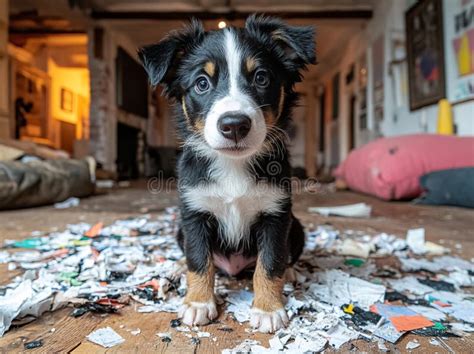
A family was left in stitches after their Bully breed dog, Moose, underwent an unexpected transformation during a grooming appointment, emerging with dramatically arched eyebrows that gave him a comically expressive and almost human-like appearance.
Moose’s owner, Chris, was initially stunned when he picked up his beloved pet from the groomer, noticing the significantly altered brow area. The incident, which has since gone viral, highlights the sometimes unpredictable nature of pet grooming and the power of social media to amplify everyday moments into global sensations.
The family, who are taking the situation in stride, hopes their experience will bring laughter and levity to others. While the exact cause of Moose’s eyebrow alteration remains somewhat unclear, the internet’s response has been overwhelmingly positive, with many finding humor in the dog’s newfound expressive face.
The unusual grooming mishap has led to a surge of attention on social media, prompting discussions about pet grooming practices, breed-specific grooming needs, and the importance of clear communication between pet owners and groomers. The incident also serves as a reminder of the deep bonds people share with their pets and the joy they find in even the most unexpected moments.
Chris, Moose’s owner, recounted his initial reaction upon seeing Moose’s new look. “I was stunned… I didn’t know what to think,” he stated, emphasizing the unexpected nature of the transformation. He further explained that Moose had never had such a drastic grooming outcome before.
The family has embraced Moose’s makeover, sharing photos and videos of him on various social media platforms. The internet has responded with an outpouring of support, laughter, and creative memes, turning Moose into an overnight sensation. Many have commented on Moose’s newfound ability to convey a range of emotions simply through his eyebrows, while others have praised the family’s lighthearted approach to the situation.
The incident has sparked a wider conversation about responsible pet ownership and the importance of choosing qualified and experienced groomers. Some veterinarians and animal care professionals have weighed in on the matter, emphasizing the need for pet owners to thoroughly research grooming services and communicate specific preferences and concerns to groomers before leaving their pets in their care.
Despite the initial shock, Chris and his family have turned the situation into a positive experience, using Moose’s unexpected makeover to spread joy and laughter online. They have also used their platform to advocate for responsible pet ownership and promote positive interactions between pet owners and grooming professionals.
Background on Bully Breeds and Grooming Needs
Bully breeds, often characterized by their muscular build and distinctive head shape, encompass a variety of dog types including American Bullies, American Pit Bull Terriers, American Staffordshire Terriers, and English Bulldogs. Although known for their strength and loyalty, Bully breeds have sometimes faced misconceptions and negative stereotypes. Understanding their specific needs, including grooming requirements, is crucial for responsible ownership.
Bully breeds generally have short, smooth coats that require relatively low maintenance compared to long-haired breeds. Regular brushing, typically once or twice a week, helps to remove loose hair and distribute natural oils, keeping their coats healthy and shiny. Bathing is usually only necessary every few months, or when the dog becomes particularly dirty, as frequent bathing can strip the coat of its natural oils and lead to dryness or skin irritation.
However, some Bully breeds, particularly those with wrinkles or skin folds, such as English Bulldogs, require special attention to prevent skin infections. These wrinkles need to be cleaned regularly to remove dirt and moisture, which can create a breeding ground for bacteria and yeast. Specialized wipes or mild cleaning solutions are often recommended for this purpose.
Nail trimming is another essential aspect of Bully breed grooming. Overgrown nails can cause discomfort and even lead to joint problems. Regular trimming, typically every few weeks, helps to keep nails at a healthy length. Ear cleaning is also important, especially for breeds with floppy ears, as they are more prone to ear infections.
While professional grooming is not always necessary for Bully breeds, some owners choose to have their pets groomed by professionals for convenience or to address specific needs, such as anal gland expression or specialized coat treatments. When selecting a groomer, it is crucial to choose one who is experienced in working with Bully breeds and understands their unique grooming requirements.
Clear communication between pet owners and groomers is essential to ensure a positive grooming experience. Owners should clearly communicate their preferences and any concerns they may have, such as sensitivities to certain products or specific areas that need extra attention. It is also important to provide the groomer with any relevant medical information, such as allergies or skin conditions.
The Viral Impact of Moose’s Transformation
Moose’s eyebrow transformation quickly gained traction on social media platforms, with photos and videos of him being shared and reshared countless times. The internet’s response was overwhelmingly positive, with many users expressing amusement and admiration for Moose’s expressive new look.
Memes featuring Moose flooded social media, with users creating humorous captions and scenarios that highlighted his newfound ability to convey a range of emotions. Some compared him to famous actors known for their expressive eyebrows, while others imagined him in various comedic situations.
The viral attention also led to a surge in media coverage, with news outlets around the world reporting on Moose’s unusual grooming mishap. The story resonated with people from diverse backgrounds, demonstrating the universal appeal of humor and the power of animals to bring joy to people’s lives.
The family leveraged Moose’s newfound fame to promote responsible pet ownership and advocate for clear communication between pet owners and groomers. They used their platform to share tips on choosing a qualified groomer and communicating specific grooming preferences.
The viral incident also sparked discussions about the potential risks and benefits of pet grooming. Some veterinarians and animal care professionals cautioned against excessive or unnecessary grooming, as it can sometimes lead to skin irritation or other health problems. They emphasized the importance of choosing gentle grooming products and avoiding harsh chemicals.
Others highlighted the benefits of regular grooming, such as removing loose hair, preventing matting, and detecting potential health problems early on. They emphasized that grooming can also be a bonding experience for pets and their owners, providing an opportunity for physical contact and interaction.
Ethical Considerations in Pet Grooming
The incident involving Moose raises important ethical considerations regarding pet grooming practices. While grooming is an essential aspect of pet care, it is important to ensure that it is performed in a safe and ethical manner, with the well-being of the animal always being the top priority.
Groomers have a responsibility to treat animals with respect and compassion, avoiding any practices that could cause pain, fear, or distress. They should be properly trained and knowledgeable about animal behavior and handling techniques. They should also be aware of breed-specific grooming needs and sensitivities.
Pet owners also have a responsibility to choose qualified and reputable groomers who adhere to ethical grooming standards. They should do their research, read reviews, and ask for recommendations before entrusting their pets to a groomer. They should also clearly communicate their preferences and concerns to the groomer and be willing to address any issues that may arise.
In some cases, grooming practices may be influenced by aesthetic trends or competitive pressures. It is important to resist the urge to prioritize aesthetics over the well-being of the animal. Grooming should always be performed with the animal’s comfort and health in mind.
The use of certain grooming products, such as dyes or harsh chemicals, can also raise ethical concerns. Pet owners should be aware of the potential risks associated with these products and choose safer alternatives whenever possible. Groomers should also be transparent about the products they use and be willing to provide information about their ingredients and potential effects.
The Role of Social Media in Shaping Perceptions of Pets
Moose’s story exemplifies the significant role that social media plays in shaping perceptions of pets. Social media platforms have become a powerful tool for pet owners to share their experiences, connect with other pet lovers, and advocate for animal welfare.
The viral nature of Moose’s transformation demonstrates how quickly information can spread on social media, reaching a global audience in a matter of hours. Social media can be used to raise awareness about important issues, such as animal abuse or neglect, and to promote responsible pet ownership.
However, social media can also contribute to the spread of misinformation or negative stereotypes about certain breeds or types of pets. It is important to be critical of the information encountered on social media and to rely on reputable sources for accurate and reliable information.
Social media can also create unrealistic expectations about pet ownership. The carefully curated images and videos often seen on social media may not accurately reflect the realities of living with a pet. It is important to be aware of these biases and to approach pet ownership with realistic expectations.
Despite these potential drawbacks, social media can be a valuable tool for connecting with other pet lovers, sharing experiences, and advocating for animal welfare. By using social media responsibly, pet owners can contribute to a more positive and informed perception of pets.
Expert Opinions on Pet Grooming Mishaps
Several veterinarians and animal behaviorists have weighed in on the incident involving Moose, offering insights into the potential causes of the eyebrow transformation and providing advice on how to prevent similar mishaps in the future.
Dr. Emily Carter, a veterinarian specializing in dermatology, suggested that the eyebrow alteration could have been caused by a number of factors, including accidental trimming, allergic reaction to grooming products, or underlying skin conditions. She emphasized the importance of choosing gentle grooming products and avoiding harsh chemicals that could irritate the skin.
“It’s crucial to use hypoallergenic shampoos and conditioners, especially for breeds with sensitive skin,” Dr. Carter explained. “Also, always patch test any new product on a small area of the skin before applying it to the entire body.”
Dr. Mark Thompson, an animal behaviorist, highlighted the importance of positive reinforcement training to help pets become comfortable with grooming procedures. He suggested starting with short, positive grooming sessions and gradually increasing the duration as the pet becomes more comfortable.
“Positive reinforcement, such as treats and praise, can help to create a positive association with grooming,” Dr. Thompson said. “It’s also important to avoid forcing a pet to endure grooming if they are showing signs of stress or anxiety.”
Both experts emphasized the importance of clear communication between pet owners and groomers. Owners should clearly communicate their preferences and any concerns they may have, and groomers should be willing to listen and address those concerns.
“Open communication is key to preventing misunderstandings and ensuring a positive grooming experience for both the pet and the owner,” Dr. Carter said.
Long-Term Impact on Moose and His Family
While the initial reaction to Moose’s eyebrow transformation was one of shock and amusement, the incident has had a lasting impact on the family, both positive and negative.
On the positive side, Moose’s newfound fame has provided the family with a platform to promote responsible pet ownership and advocate for clear communication between pet owners and groomers. They have used their platform to share tips on choosing a qualified groomer and communicating specific grooming preferences.
The family has also received an outpouring of support from the online community, with many users expressing admiration for their lighthearted approach to the situation. The positive feedback has been encouraging and has helped the family to cope with the challenges of dealing with a viral phenomenon.
However, the sudden fame has also brought some challenges. The family has had to deal with an influx of media inquiries and social media messages. They have also had to be mindful of their online presence and ensure that they are using their platform responsibly.
Despite these challenges, the family remains committed to using Moose’s story to spread joy and laughter and to promote responsible pet ownership. They hope that their experience will serve as a reminder of the deep bonds people share with their pets and the importance of treating animals with respect and compassion.
Preventative Measures for Future Grooming Appointments
To prevent similar grooming mishaps from occurring in the future, pet owners can take several preventative measures.
First, it is essential to choose a qualified and reputable groomer who is experienced in working with the specific breed of pet. Owners should do their research, read reviews, and ask for recommendations before entrusting their pets to a groomer.
Second, it is crucial to have a thorough consultation with the groomer before the grooming appointment. Owners should clearly communicate their preferences and any concerns they may have, such as sensitivities to certain products or specific areas that need extra attention.
Third, owners should provide the groomer with any relevant medical information, such as allergies or skin conditions. This information can help the groomer to choose appropriate grooming products and avoid potential health problems.
Fourth, owners should be present during the grooming appointment, if possible. This allows them to observe the grooming process and ensure that their pet is being treated with respect and compassion.
Finally, owners should be prepared to address any issues that may arise during the grooming appointment. If they are not satisfied with the grooming service, they should communicate their concerns to the groomer and be willing to work towards a resolution.
By taking these preventative measures, pet owners can help to ensure a positive and safe grooming experience for their pets.
The Importance of Open Communication
Throughout the entire incident involving Moose, the importance of open communication between pet owners and groomers has been a recurring theme. Clear communication is essential for preventing misunderstandings and ensuring a positive grooming experience for both the pet and the owner.
Pet owners should clearly communicate their preferences and any concerns they may have to the groomer. This includes providing information about the pet’s breed, age, health conditions, and previous grooming experiences. Owners should also be specific about the desired haircut or style and provide photos or examples if possible.
Groomers, in turn, should be willing to listen to the owner’s concerns and address any questions they may have. They should also be transparent about their grooming practices and the products they use. If they encounter any problems during the grooming process, they should immediately notify the owner.
Open communication can help to prevent misunderstandings and ensure that both the pet owner and the groomer are on the same page. It can also help to build trust and create a positive relationship between the two parties.
In the case of Moose, it is unclear whether there was a breakdown in communication between the owner and the groomer. However, the incident serves as a reminder of the importance of clear communication in all aspects of pet care.
Conclusion: A Lesson in Laughter and Responsibility
Moose’s eyebrow transformation, while initially shocking, has ultimately become a source of laughter and a lesson in responsible pet ownership. The incident has highlighted the importance of clear communication between pet owners and groomers, the need for ethical grooming practices, and the power of social media to shape perceptions of pets.
The family’s lighthearted approach to the situation has been inspiring and has demonstrated the deep bonds people share with their pets. They have used their platform to promote responsible pet ownership and advocate for positive interactions between pet owners and grooming professionals.
Moose’s story serves as a reminder that even in the face of unexpected challenges, there is always room for laughter and joy. By embracing the unexpected and learning from our mistakes, we can create a more positive and compassionate world for both humans and animals.
Frequently Asked Questions (FAQ)
Q1: What exactly happened to Moose’s eyebrows?
A1: Moose, a Bully breed dog, underwent a grooming appointment and emerged with dramatically arched eyebrows, giving him a comically expressive appearance. The exact cause of the alteration is unclear, but possibilities include accidental trimming, an allergic reaction to grooming products, or a pre-existing skin condition.
Q2: How did Moose’s owner react to his new look?
A2: Moose’s owner, Chris, was initially stunned and didn’t know what to think. He explained that Moose had never had such a drastic grooming outcome before. However, the family quickly embraced the situation and began sharing photos and videos of Moose on social media.
Q3: What has been the internet’s response to Moose’s transformation?
A3: The internet’s response has been overwhelmingly positive. Many users have found humor in Moose’s expressive new look and have created memes and humorous captions featuring him. The story has also been widely covered by news outlets around the world.
Q4: What steps can pet owners take to prevent similar grooming mishaps in the future?
A4: To prevent similar mishaps, pet owners should choose qualified and reputable groomers, have thorough consultations before appointments, provide relevant medical information, be present during grooming if possible, and be prepared to address any issues that may arise. Clear communication is key.
Q5: What are some ethical considerations to keep in mind when it comes to pet grooming?
A5: Ethical considerations in pet grooming include treating animals with respect and compassion, avoiding practices that cause pain or distress, using gentle grooming products, and prioritizing the animal’s well-being over aesthetics. Groomers should be properly trained and knowledgeable about animal behavior and breed-specific grooming needs.
Additional details: Breed Specifics American Bully (as noted in other responses) – Grooming depends on coat type which varies and is not defined by breed. American Pit Bull Terrier – short single coat, easy to groom American Staffordshire Terrier – Short single coat, easy to groom English Bulldogs – Known for wrinkles that need special attention.
Moose’s breed may play into why the eyebrows were as pronounced as they are. Groomers may not be as familiar with bully breeds. Grooming education is something the Professional Pet Groomers Association of America highly recommends to prevent incidents like this. It helps them understand skin, coat, and breed specific grooming requirements and standards.
Tools of the Trade
The tools used by groomers can impact the result. The type of shears can cause mistakes. The length, style, and technique of the groomer determines the outcome of the groom. Not all groomers are created equally.









